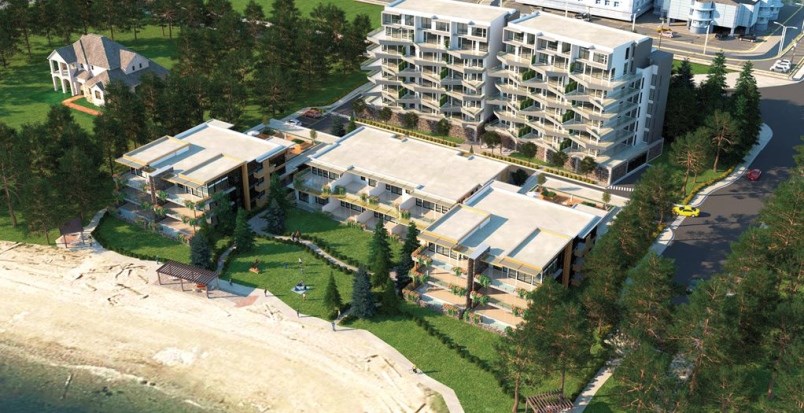Despite a group from the surrounding neighbourhood holding small signs urging them to vote no, Sechelt council has given third reading to the zoning bylaws that will allow RTC properties to develop land on the waterfront, near Snickett Park.
The scope of the development, which first came to council in 2016, has undergone three major revisions, reducing the height and cutting the number of units from 48 to 31 and ultimately to 20.
Planner Angela Letman told councillors Dec. 20 that the developer was prepared to go ahead based on a 20-unit build out, but the reduction also took the possibility of negotiating amenities for “density bonusing” off the table. Those amenities included about $400,000 for the affordable housing reserve.
Several councillors were comfortable with that compromise given neighbourhood opposition to higher density, but Coun. Darnelda Siegers argued in favour of the 31-unit proposal.
“I believe that by moving forward with [20 units] were are short-changing not only the local residents for the improvements they would have there, but the wider community as well,” she said.
A 1,600-square-metre extension of Snickett Park is the only amenity contribution that will carry forward from the earlier proposals.
Coun. Noel Muller said even at 20 units the property is being “up-zoned.”
“We have an option as a council any time we have a development come forward to pursue additional density for community amenities, and we heard really loud and clear from the local residents in this case that that’s not something they were interested in.”
Mayor Bruce Milne acknowledged council has struggled with the RTC decision and went as far as arranging “an extraordinary meeting” between neighbours and the developer to try to come up with a plan they could support.
Milne said the current proposal would create a transition between single-home lots and higher density in the downtown core and fits within the Official Community Plan. He also cautioned against making decisions about density based on the amenities that could be negotiated instead of what’s best for the property.
Calling the lot a “special property,” Coun. Alice Lutes said she favoured the 20-unit proposal. “It’s some density … but it isn’t so overpowering in numbers that it takes away the residential appearance of that community.”
Coun. Darren Inkster, who generally supports higher density, said he would support the zoning “with difficulty” as a compromise solution.
Coun. Doug Wright, who moved to have the vote deferred earlier in December, said he’s still not convinced 20 units is the best option, although 31 would likely be too dense.
He and Siegers opposed third reading, but the balance of council voted in favour and the bylaw will likely come back for final adoption later this month.



